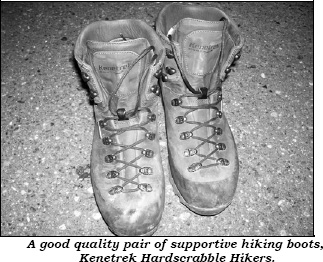Hunting Gear and Equipment
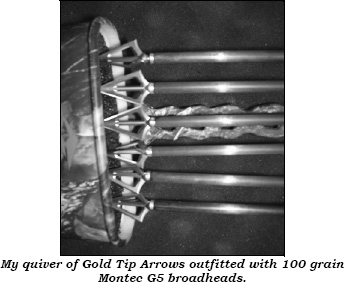
Kinetic Energy
Tip: Kinetic energy calculation is mass (total arrow weight in grains) velocity (arrow speed in feet per seconds)x2 (arrow weight in grains) / 450,250
So, have you calculated your kinetic energy?
Here is my setup:
arrow weight in grains x (velocity x velocity) /450,250 = foot-pounds of kinetic energy
I shoot a Bowtech Tribute set at 70 pounds with a draw length of 27.5 inches. I shoot 5575 Gold Tip Pro Hunter arrows tipped with 100 grain heads. Out of the chronograph, I clocked my arrow shooting at 291 feet per second with an arrow weight of 361 grains with stock Gold Tip nocks.
Make sure you chronograph your bow and arrow speed. My bow advertises a speed of 338 feet per second, but through the chronograph it shoots only 291 feet per second.
So the calculation looks like this for me:
My current setup hits with 68 foot-pounds of kinetic energy. Perform the calculation to see how much power you are hitting your targets with. You want to make sure you have the required power to effectively kill the animal you are hunting.
Broadheads
I personally feel that fixed blade cut on contact broadheads are the best for penetration and strength. Some examples are the Montec G5 and Hell Razors. 100 grains are a good weight for broadheads, but if you have a heavier arrow, 125 grains should be used. Traditional archers use heavier broadheads than compound bow hunters.

Arrows should be heavy enough and have a stiff enough spine for your setup; you can consult different manufacturers’ charts to see if your arrow has the appropriate spine for your draw weight and length. Check out the resource chart on the following website:
Tip: Bringing a target for your bow is a great way to stay sharp and keep your confidence up by flinging a few arrows at camp. It is also needed to make sure you can adjust your sight if you bang your sight box or pins out of alignment during travel or hunting.
Rifles and Bullets
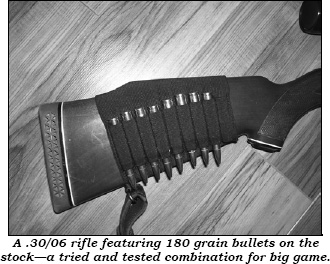
Tip: 150 grain bullets and heavier are recommended for black bear hunting.
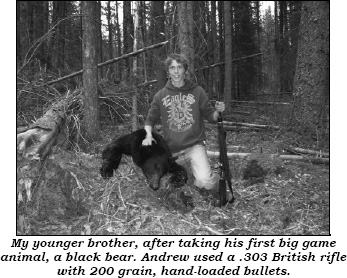
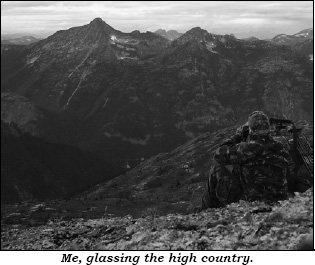
Buy the best optics you can afford; most important are binoculars: get a good 10×42 set. 10×42 binoculars have enough power and lightgathering ability to be effective while they are still lightweight compared to 12 and 15 power optics. Swarovski, Leica, and Zeiss are the best brands, but not everyone can afford them. If you are like me, try finding a good bargain on the Internet on some other good name brands like Leupold Goldring, Brunton Epoch, Eterna, Nikon, or Vortex. You can even find some barely-used, high-quality optics in the $500-$700 range.
Rangefinders
You can find some really good deals on the Internet for rangefinders. With new technology like the angle trajectory compensation, you can really eliminate the variables. Bushnell, Leupold, and Nikon all have quality rangefinders with this technology. Swarovski, Zeiss, and Leica all make high quality rangefinders. If you can afford them, great, but put more money into binoculars than rangefinders. Bow hunters should use rangefinders to minimize the guesswork of shooting yardages in order to avoid wounding game with a miscalculated shot.
Clothing
Dress appropriate for the weather: if warm, make sure you have a light base layer like Under Armour Heat Gear or lightweight merino wool. Cotton pants or wool trousers with wool socks are best. Even in warm weather, you should wear wool socks to avoid blisters and to insulate in case it gets cold and your feet are sweaty. Make sure to have a sweater or fleece in case it cools down at night. Having raingear handy is always smart.
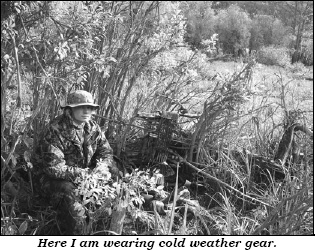
Boots
You should have two pairs of hiking boots: one good pair, and one back-up pair. Hunting boots should be tough, supportive, light, and waterproof. Don’t forget to break in your boots before you go hunting in them. Make sure your equipment is camp and hunt-ready by testing it before you go out. This means checking everything you are going to use: fire up the camp stove; make sure you have enough new batteries for your GPS, rangefinder, and flashlights, etc. Take some salt for the hides, as well as game bags to hold the hides and meat in (separate bags, of course).
